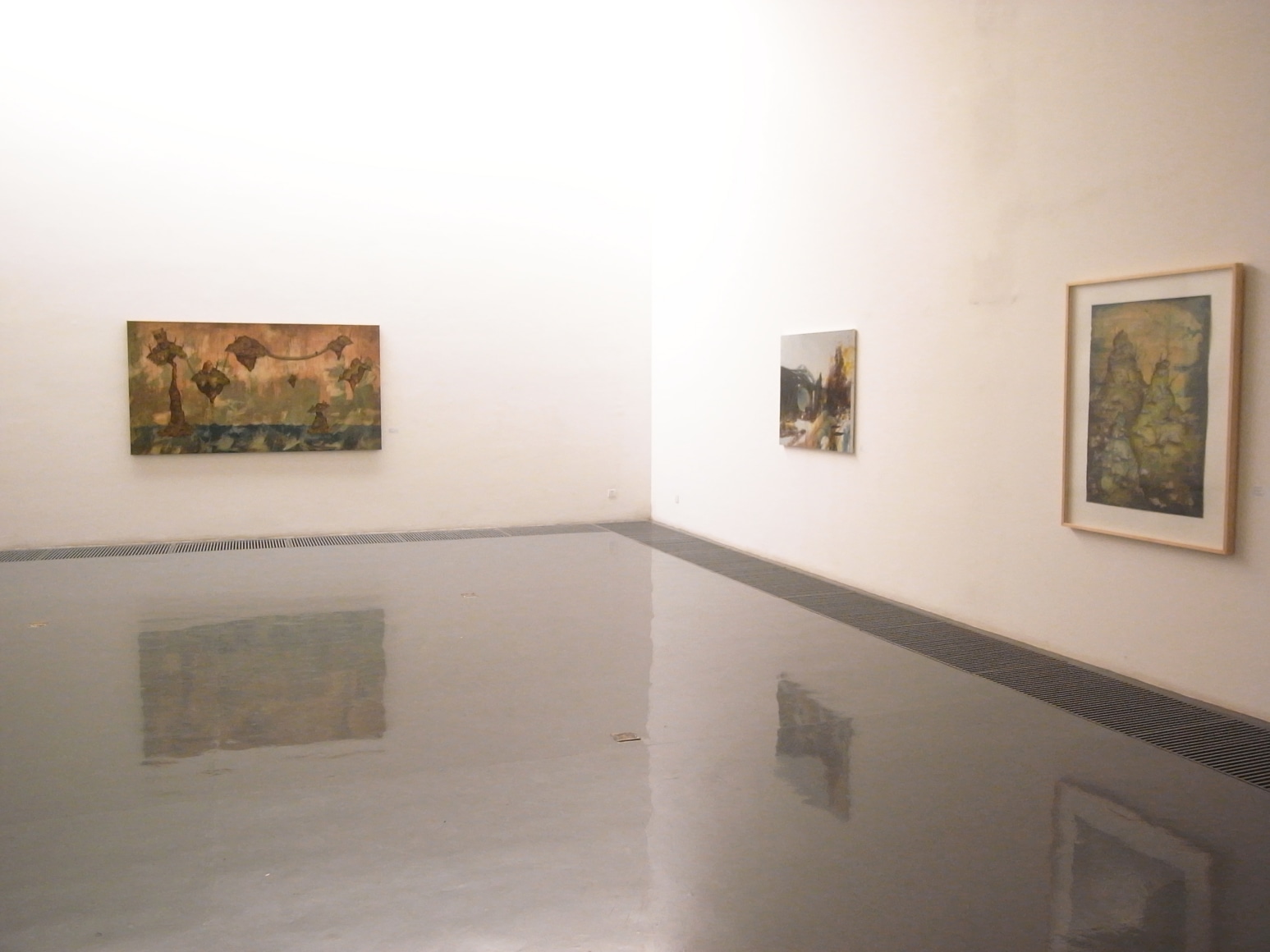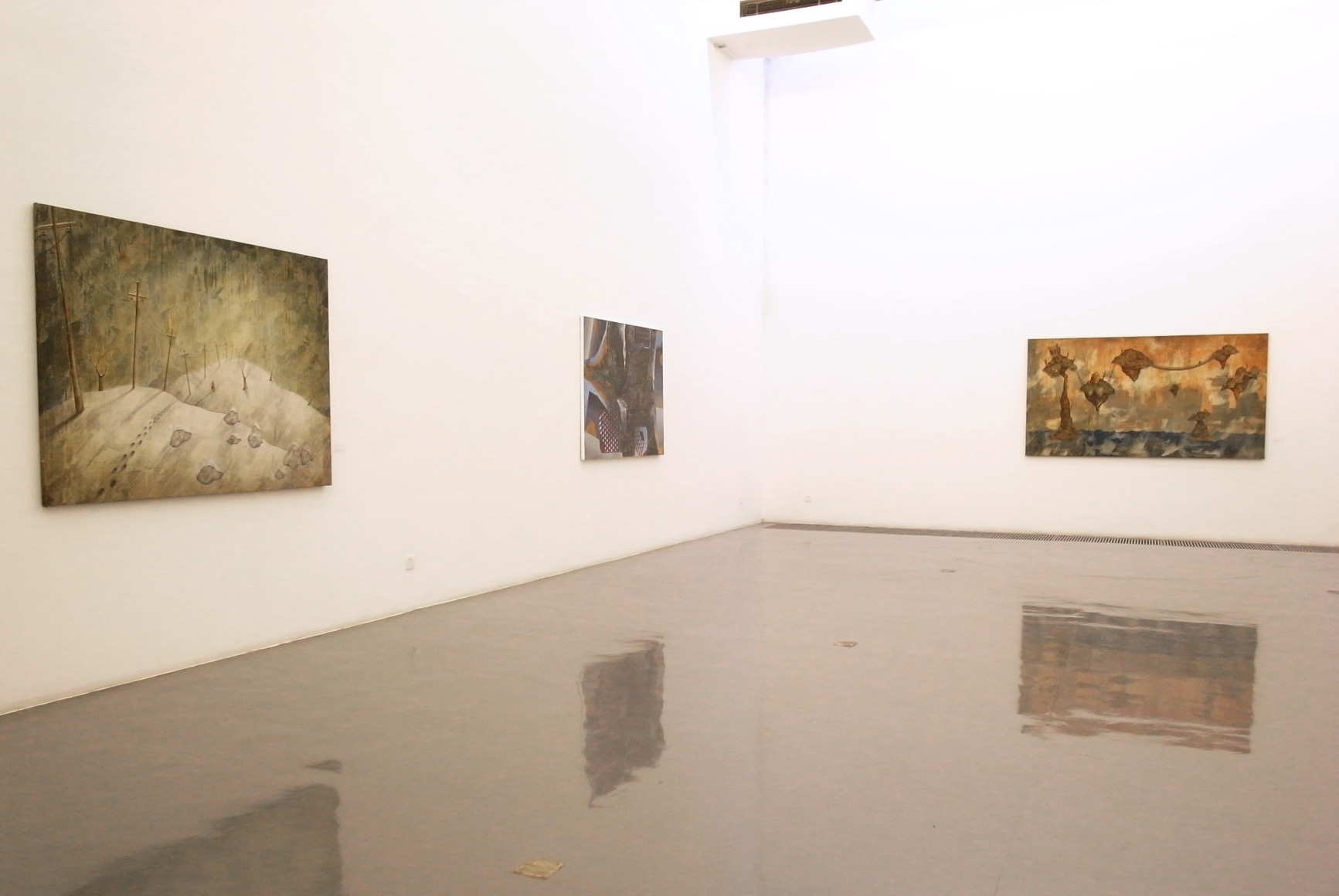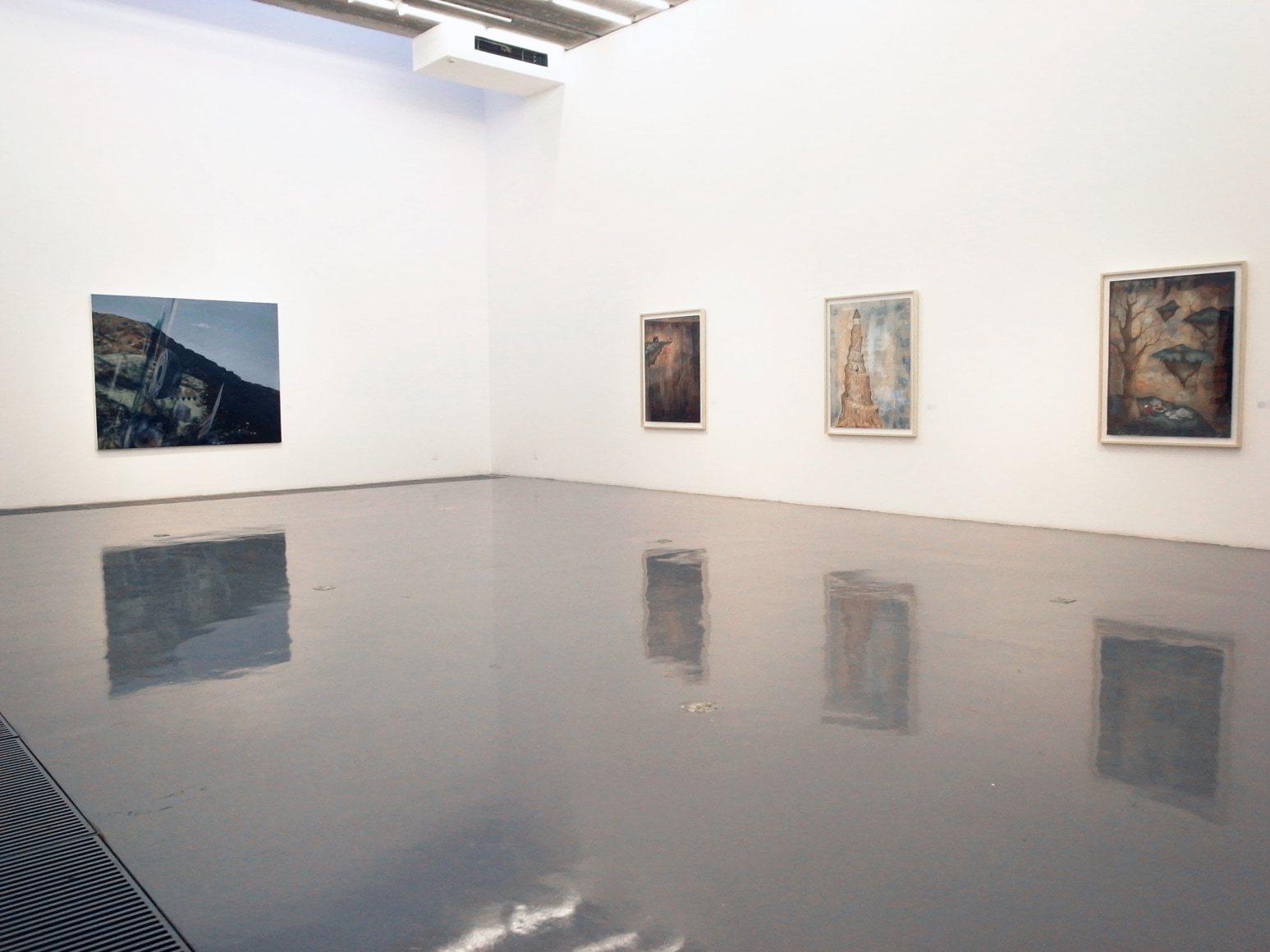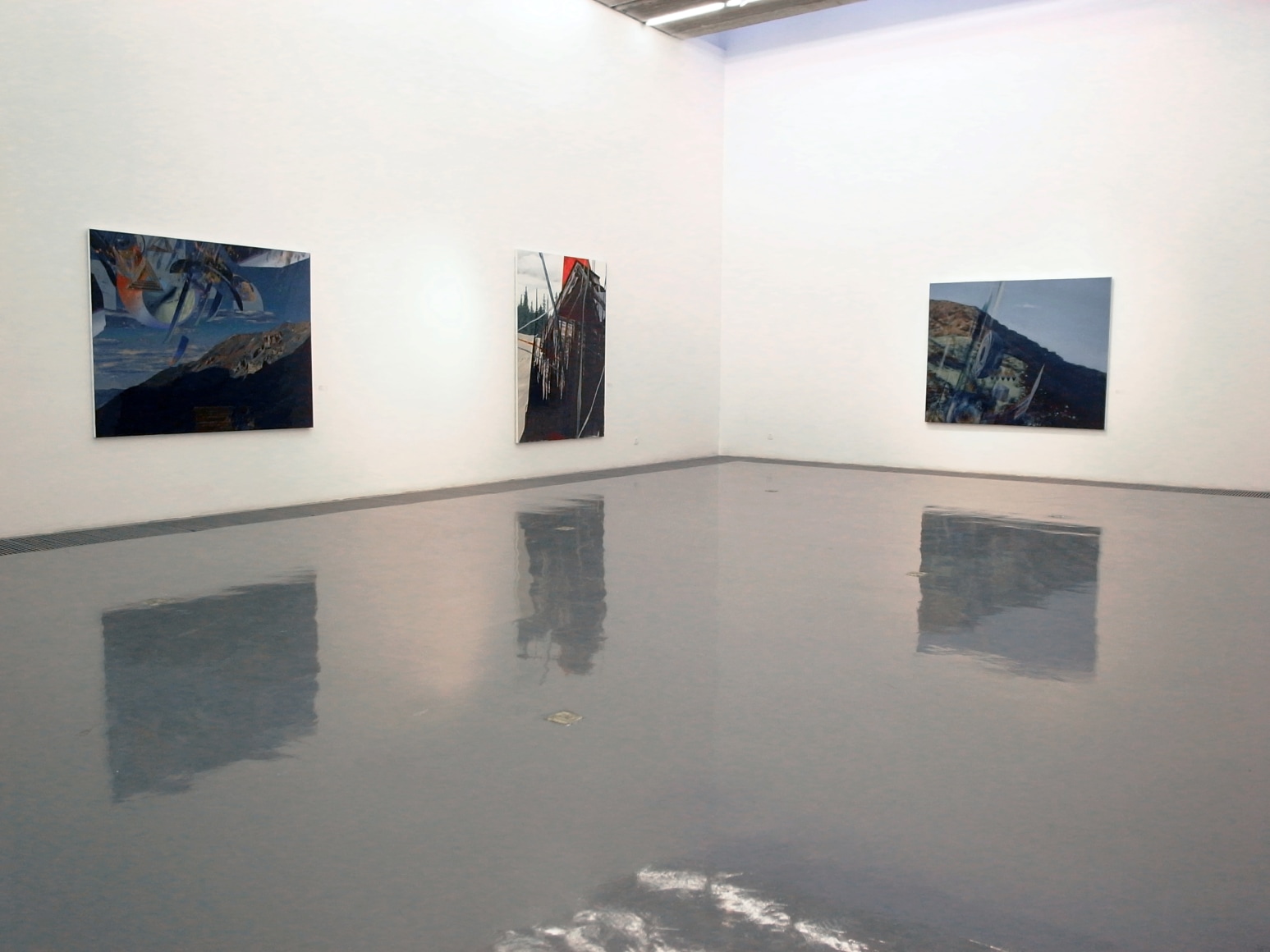Chambers Fine Art is pleased to announce the opening on January 8, 2011 of In Between: Paintings by Jacob Feige and Jeffrey Schweitzer. Feige and Schweitzer are both graduates of the Cranbrook Academy of Art, one of the leading graduate schools of art, architecture and design in the United States. United by educational background and ties of friendship, both artists are painters and work in the traditional media of oil on canvas and in wash on paper. They also share an interest in landscape, one of the defining themes of western figurative art since the seventeenth century, although they use it for expressive purposes which reflect differences in personality and cultural references.
For Feige the landscape of North America in the first years of the twenty-first century is as inspirational as it was to the painters of the Hudson River School in the mid-nineteenth century. Unlike his predecessors, however, who responded to the grandeur of the natural environment while remembering the great achievements of western Old Masters, Feige grew up in an age in which classical references had been supplanted by contemporary cultural phenomena and the language of abstract painting. Speaking of his work, Feige has described how “within the material and conceptual framework of painting, I allow the American landscape, science fiction, otherworldly geometry, and many other experiences to coalesce and fracture, producing new forms and new questions. The process is a material one. Sometimes I situate geometric forms in the space of the landscape, while at other times they sit on top of it, in the space of the viewer. Similarly, transparent pours of paint often become atmosphere and weather in the space of the landscape. Other times they flow on the surface of the painting, becoming physical records of an oozing drift.”
Noteworthy for their painterly quality and exquisite coloring, Feige’s paintings also offer an intriguing glimpse into the mind of the artist as he contemplates the dilemma facing a figurative artist today, working “in between” diametrically opposed approaches to picture-making. In contrast, Schweitzer’s landscapes owe little or nothing to nature observed. His craggy mountains, narrow footpaths and rushing streams owe more to popular illustrations and the art of the fantastic than they do to anything seen in the world outside. Indeed, when his mountains become detached from their moorings and float in mid-air, his imagery is not unrelated to the dream-world of Avatar. As with Feige, there is concern for the way in which atmospheric washes of color and visual accidents undermine the solidity of precisely delineated forms. Schweitzer has described how “the surfaces of these works are first built up with layers of acrylic matte medium. Many layers of ink are added and removed revealing the textures created by the medium.” In most of Schweitzer’s landscapes, however, a human presence which Schweitzer identifies as “an idealized self-portrait” offers a different perspective on the geological and natural phenomena that provide the setting. Collaged onto the works as the final physical act of putting himself into the work, the solitary Drifter whether lost in a forest, perched on a rock or dwarfed by a giant wave, might seem to embody a forlorn commentary on the human situation. Preoccupied with his own thoughts, he plods on with the determination of a character from Samuel Beckett. As perceived by the artist, however, his sense of purpose results from quiet optimism rather than defeatism.
Exhibiting together for the first time, Feige and Schweitzer offer a revealing commentary on each other’s work and a clear demonstration of the way in which the language of painting is still profoundly indebted to local traditions and concerns.
前波画廊将于2011 年1 月8 日始举办《境中游:Jacob Feige 与Jeffrey Schweitzer 画展》。 这两位年轻的美国艺术家都毕业于著名的Cranbrook 美术学院,是美国顶级的集艺术、建筑 和设计为一体的艺术学校。两人从同一所学校毕业,又是好朋友,艺术创作上也不约而同的 选择了布上油画和纸上墨彩。他们都对风景情有独钟,而风景画也正是西方传统艺术中具象 艺术的重要组成部分,自十七世纪始已占据了定义性的地位。从这次展览的作品中可以看到, Jacob Feige 和Jeffrey Schweitzer 两人用这个传统的艺术主题来表述各人不同的经历、个性和 对文化和传统的理解。
虽然身处二十一世纪,但Jacob Feige 对美国北部景观的情怀和从中得到的灵感,可以和 十九世纪中期哈德逊河流画派的画家相比。这些画家在感叹自然景观之伟大的同时,也没有 忘记西方古典大师在艺术创作上的成就。Jacob Feige 与他们不同之处在于,他对传统成就的 理解融合了对当代文化和抽象绘画的亲身感受。他这样描述自己的作品:“在绘画这个物质和 概念的语境下,我将美国风景、科幻、超自然的几何图形、和其他许多经历融合又同时分裂, 产生出新的形式和新的问题。这是一个物质的过程。我有时将几何图形置身于风景之内,有 时又将它们放在风景之上即观者的空间里。泼在画面上的透明油彩常常在风景中成为氛围和 空气,有时又浮在画面的表面上,成为漂泊渗透的物质证明。”
Jacob Feige 的油画不但从色彩和技法上引人注目,也使观者从一个不寻常的角度看到当 今具象艺术家所面临的挑战和困境,在各种几乎相斥的途径“之间”创作。与他不同,Jeff Schweitzer 笔下的风景与他观察到的实景毫无联系。他创作的崎岖的山脉、狭窄的小径、流 淌的溪流等,更加来源于大众插图和荒诞艺术。山脉从停泊处脱离飘荡在空中,他的艺术似 乎可以和《阿凡达》电影中的梦中世界相比。他的作品中也用墨彩来制造画面的气氛,用偶 然性的视觉效果来强调精确描绘出的形象。Jeff Schweitzer 说:“这些作品的表面由一层一层 不光滑的丙烯叠加起来,许多层彩墨被添加再抹去,显露出每种媒介的质感。”同时,在这些 风景中,总有一个人出现——“一个被完美了的自我肖像”——给观者提供一个接近画面上 呈现的地质和自然现象的渠道。他将自己的形象黏贴在画面上,孤独的漂泊者在森林里迷路, 在岩石上休息,在巨型海浪里渺小,似乎对人文环境作出孤立无助的评价。沉浸在自己的思 想中,他以Samuel Beckett 笔下人物一样的决心缓慢前进。在Jeff Schweitzer 的诠释下,漂泊 者抱着平静的乐观向目标前进。





